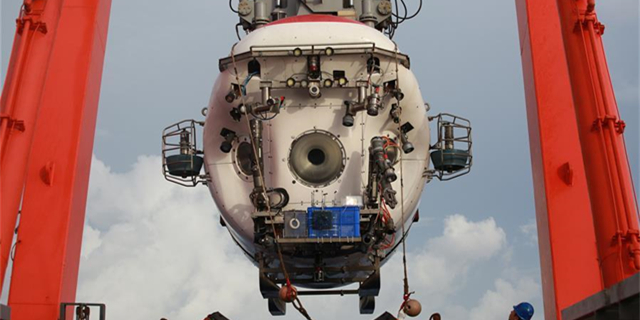Listed companies' profits point to new economic momentum
BEIJING - Innovation and emerging sectors such as smart manufacturing are lending greater support to Chinese listed companies in raking in hefty profits, despite a broader economic slowdown.
Smart manufacturing
Hangzhou Robam Appliances, a kitchen appliance industry leader based in eastern China's Zhejiang province, has bid farewell to low-efficiency production, with its smart manufacturing production lines powered by industrial robots, big data and the Internet of Things.
The smart manufacturing plant, which was put into use in 2015 and can turn out 2.25 million electric kitchen appliances each year, required investment of 750 million yuan ($109 million), but is able to save 35 million yuan annually in labor costs and improve productivity by 30 percent, said Wang Gang, vice president of the company.
Improved product quality also helped the listed company gain a bigger market share as many affluent Chinese are willing to spend more on expensive home appliances.
Net profits of Hangzhou Robam Appliances surged 45.32 percent year on year in 2016 to 1.2 billion yuan, faster than its business revenue growth at 27.6 percent year on year to 5.8 billion yuan, reflecting strengthened profitability amid fierce market competition.
The company's transition is testimony to Chinese businesses' ascent up the global value chain and the nation's economic restructuring.
Chinese listed companies reported brisk profit growth in 2016, as they ramped up spending on research and development, with emerging sectors outperforming traditional industries.
Combined net profits from growth enterprises listed on the NASDAQ-style tech and emerging sector-heavy ChiNext board surged 36.7 percent in 2016, faster than the 4.3-percent growth from publicly traded companies on the two main bourses in Shanghai and Shenzhen, according to data from Choice, a leading financial data provider.
Smart manufacturing and emerging sectors such as next-generation IT technology will embrace stellar growth in China over the next decade, and these sectors will all have complete supply chains that will attract massive investment, Guotai Junan Securities said in a report.
Innovation-driven growth
China is moving toward an economy boosted by consumer spending, innovation and services, reducing reliance on investment and exports of low value-added goods, boosted by strengthened efforts in innovation and research.
Without increasing outlays on innovation and new product design, Weichai Power cannot thrive. It was listed on the Shenzhen stock exchange in 2007 and staged a strong comeback in 2016 for itself and its parent group, with more than 74,000 employees on its payroll.
Stringent environmental protection requirements on engine emissions and low demand, especially weaker sales of engines for heavy-duty trucks, weighed on Weichai Power, with profits plunging 72.2 percent in 2015.
Despite cash flow constraints, the company spent 3.6 billion yuan on research and development in 2016, 9.5 percent more than in 2015, working on new energy vehicles, lowering emissions, and producing greener and more reliable engines.
"As long as newly purchased equipment does not sit idle, Weichai Power has set no budget limitations on research and development," said Tong Dehui, vice president of the company.
On the national scale, China's research and development expenditures rose 9.4 percent in 2016 year on year to 1.55 trillion yuan, accounting for 2.08 percent of gross domestic product (GDP) in 2016, data from the National Bureau of Statistics revealed.
"China's transition to slower but structurally rebalanced growth continues," the World Bank said in a recent report.
The world's second-largest economy expanded 6.7 percent in 2016, the slowest growth rate in over a quarter of a century, but tangible economic restructuring achievements are emerging.
To illustrate, industrial output growth in the high-tech manufacturing sector reached 13.4 percent in Q1 this year, outstripping the 6.8-percent registered across all industrial companies, official data showed.
"Chinese entrepreneurs should focus on boosting the real economy growth through innovation, and the Chinese economy must transition to one driven by more advanced, greener and intelligent manufacturing and services," said Song Zhiping, chairman of China National Building Material Group.
















